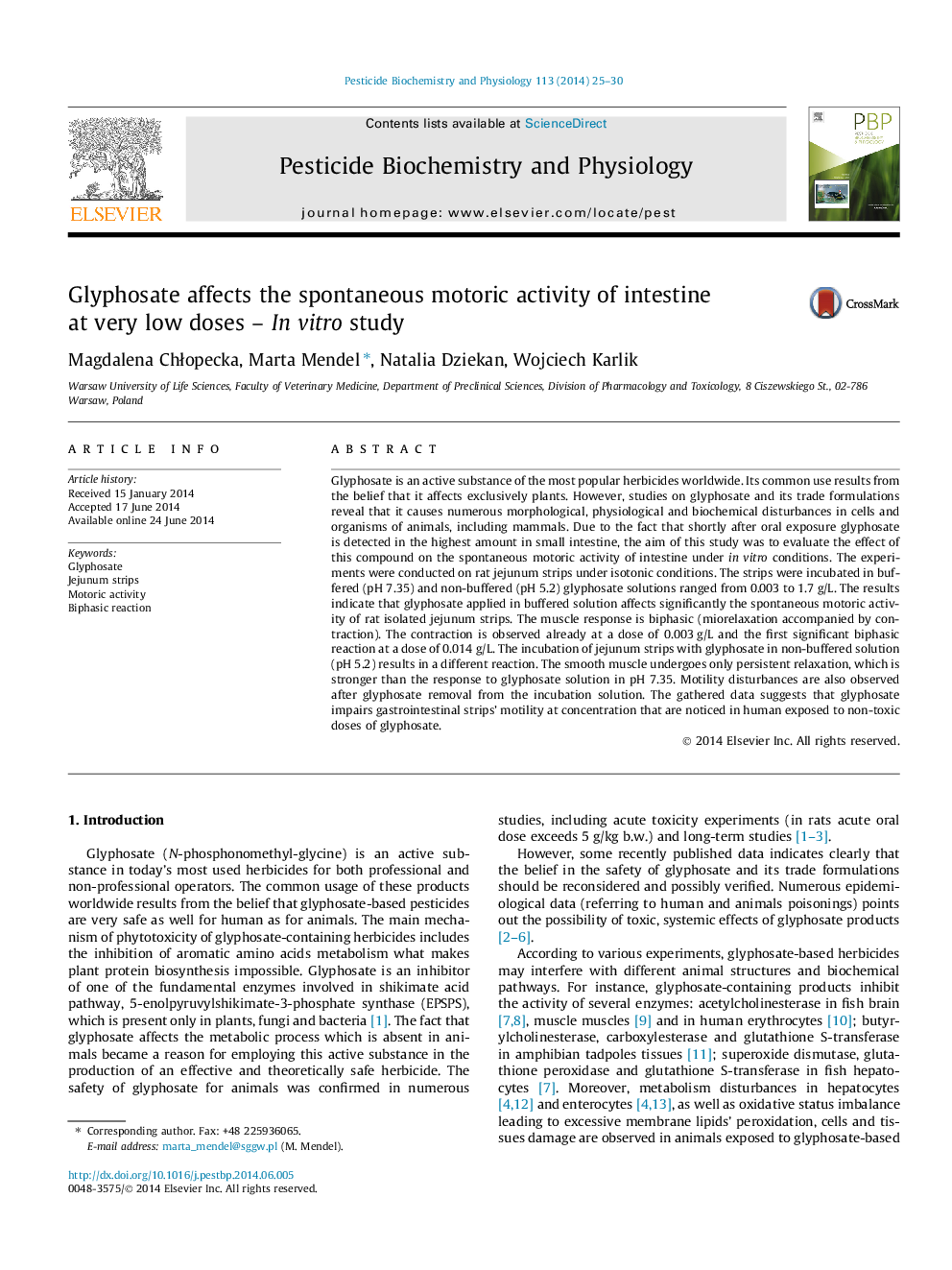| Article ID | Journal | Published Year | Pages | File Type |
|---|---|---|---|---|
| 2009319 | Pesticide Biochemistry and Physiology | 2014 | 6 Pages |
•The effect of glyphosate on isolated intestine strips.•Glyphosate affects jejunum smooth muscle activity at very low concentrations.•The reaction of glyphosate at physiological pH is biphasic.•The reaction induced by glyphosate consists of miorelaxation and contraction.•Glyphosate-evoked motoric alterations are reversible.
Glyphosate is an active substance of the most popular herbicides worldwide. Its common use results from the belief that it affects exclusively plants. However, studies on glyphosate and its trade formulations reveal that it causes numerous morphological, physiological and biochemical disturbances in cells and organisms of animals, including mammals. Due to the fact that shortly after oral exposure glyphosate is detected in the highest amount in small intestine, the aim of this study was to evaluate the effect of this compound on the spontaneous motoric activity of intestine under in vitro conditions. The experiments were conducted on rat jejunum strips under isotonic conditions. The strips were incubated in buffered (pH 7.35) and non-buffered (pH 5.2) glyphosate solutions ranged from 0.003 to 1.7 g/L. The results indicate that glyphosate applied in buffered solution affects significantly the spontaneous motoric activity of rat isolated jejunum strips. The muscle response is biphasic (miorelaxation accompanied by contraction). The contraction is observed already at a dose of 0.003 g/L and the first significant biphasic reaction at a dose of 0.014 g/L. The incubation of jejunum strips with glyphosate in non-buffered solution (pH 5.2) results in a different reaction. The smooth muscle undergoes only persistent relaxation, which is stronger than the response to glyphosate solution in pH 7.35. Motility disturbances are also observed after glyphosate removal from the incubation solution. The gathered data suggests that glyphosate impairs gastrointestinal strips’ motility at concentration that are noticed in human exposed to non-toxic doses of glyphosate.
Graphical abstractFigure optionsDownload full-size imageDownload as PowerPoint slide
